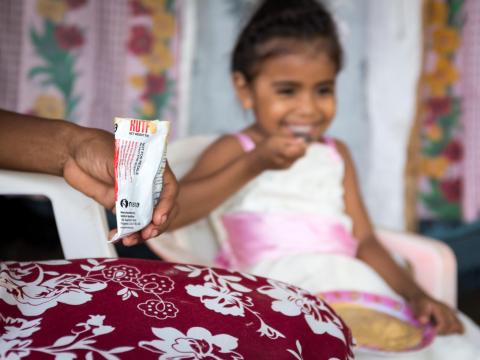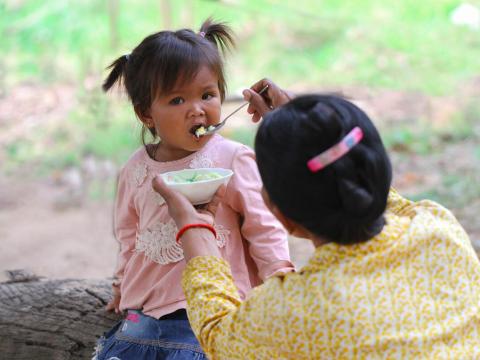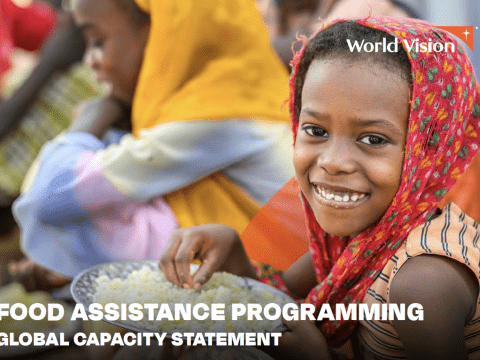Food
Together, we can end hunger
Disasters, whether natural or manmade, often lead to food insecurity. Approximately 821 million people, or just over one in nine, live in hunger. Poor nutrition is an underlying cause of nearly 2.4 million childhood deaths each year.
Food assistance saves lives by addressing the most dire and immediate forms of food insecurity, while enhancing livelihoods, improving health and education, and empowering communities to become self-reliant.
A world where all children are well-nourished
We are making progress. Last year, with partners including the World Food Programme, World Vision provided life-saving food assistance to 11.5 million people with food assistance, and another 9.8 million with cash and voucher programming, in 54 countries. We focus on the most vulnerable, including malnourished babies in Lesotho and refugees in Uganda fleeing conflict and famine. We’ve delivered emergency food relief in Malawi and South Sudan when crisis or conflict disrupted livelihoods and markets.
We are leveraging cash and voucher assistance to build longer-term food security and resilience in Kenya. In places like Iraq and Lebanon, where markets are available, but food is unaffordable, communities are provided food vouchers. Families in the Philippines and Haiti receive cash transfers to rebuild from ruin and legitimise livelihoods, giving families choice, dignity and diversified diets.
But there’s more to be done. World Vision believes a hunger-free world is possible. We advocate for national, regional and global policy changes that contribute to improved food and nutrition security for the world’s most vulnerable children, families and communities.
Meeting immediate food needs helps free families to invest in making their farms more productive, their meals more nutritious, and their children more highly educated, cared for and protected.
*Facts and figures based on 2023 data



